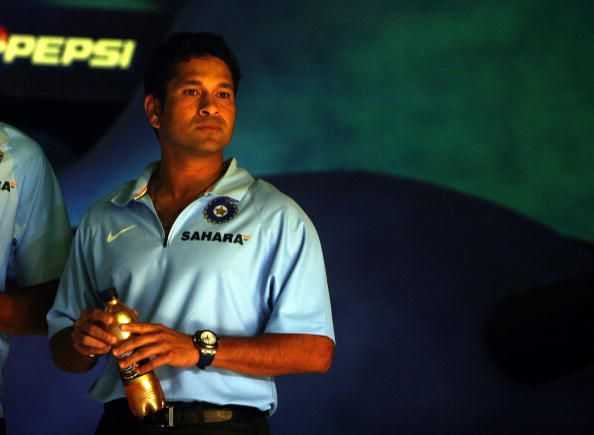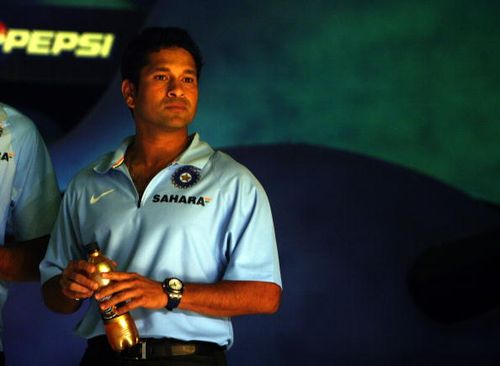
Through The Ages: Advertisements and Indian Cricket

Pepsi has always been the ‘sightscreen’ of cricket in India. Over the years, it’s cricket centric advertisements have been immensely successful. Taglines like ‘Yehi hai right choice baby’, ‘Dil Maange More’, ‘Oye Bubbly’, ‘Youngistan Meri Jaan’ and ‘Change The Game’ have become iconic and been instrumental in taking Pepsico to where it stands today. The success can be attributed to the great chord that these ads have been able to strike with the cricket watching audience. However, the fact that these ads have been contemporary has made them ever so relevant, hence, adding to the charm.
PepsiCo entered the Indian market in 1989 in a joint venture with Lehar. Ever since it bought out the shares of Lehar post 1991 reforms, it sought to outperform traditional rival, Coca Cola. Big advertisers in cricket then were Insurance giants Prudential and Cornhill and Cigarette majors Benson & Hedges, Four Square and Wills. Interestingly, it was Coke which chose to bat first on the newly laid pitch by becoming the official sponsor of the 1996 World Cup. Pepsi, however, had an ace up its sleeve. Within days of the commencement, it came up with a one of a kind Guerrilla Marketing campaign ‘Nothing Official About It’, featuring, inter alia, Sachin Tendulkar, Vinod Kambli, Mohammad Azharuddin, Ian Bishop, Courtney Walsh, Dominic Cork and even umpire Dickie Bird.
Given the magnitude of success that the campaign experienced and the fact that power centre for cricket was slowly shifting to the sub-continent from the Britains and Australias, PepsiCo management decided it was time to take the plunge and vie for the greatest share of the newly formed pie. Sachin Tendulkar was signed in as the brand ambassador, and he featured in a series of ads with the famous theme ‘Ye Dil Maange More’.
By the time the next World Cup took place in England for which it was an official sponsor, Pepsi had a proper marketing strategy in place with Bollywood superstars Shah Rukh Khan, Kajol and Rani Mukherjee, fresh from the success of Yash Raj Film’s Kuch Kuch Hota Hai, already on board. Shah Rukh Khan’s dressing room commercial shown during the entire World Cup was a huge success and generated enormous interest in Pepsi as a brand.
The turn of the century saw the soft drink majors in the eye of the storm of the Pesticide controversy. The Centre for Science and Environment reported Pepsi (and Coke) contained more that permissible amount of carcinogenic pesticide content. Within two months of publishing of these reports, the sales fell by 21%. Something drastic needed to be done, and Pepsi once again turned to cricket. While Coke went the traditional way with celebrity endorser Aamir Khan citing researches all over the world certifying its safety via its ‘Thanda Matlab Coca Cola Campaign’, Pepsi went the other way with Sachin and Shah Rukh sarcastically proclaiming ‘Pepsi Dangerous Hai’, not due to the Pesticide content, but due to selfish desires caused by the great taste it offers.
During the 2003 World Cup in South Africa, Pepsi went back on its old strategy of having multiple players from multiple teams in the ads. This time, the list included Shane Warne and Carl Hooper, who were depicted trying to kidnap Sachin and make him unavailable to play against their respective sides.
It was also during the 2003 World Cup that the remarkable huddle ad was made. It was portrayed that the Saurav Ganguly-led side, which formed a huddle at the fall of each wicket did that as an excuse to relish the tangy soft drink. The ad, although slightly controversial, was reminiscent of the 1996 brand of non-traditional and rebellious advertisement campaigns.
The following year, the Indian team went to Pakistan for the first time in years, for what was slated as ‘Dosti Series’. It was an enormous marketing opportunity for Pepsi as it was the principal sponsor of the Pakistan cricket team apart from being a major force in the Indian market. The advertisement campaigns highlighted the competitive spirit between the cross border rivals, despite the entire series being billed as a promoter for friendship and harmony. The ads showed the Indian players all set to set foot on the Pakistani soil, carrying souvenirs from their native places to be gifted to members of the Pakistani team. However, when it came to sharing ‘Pepsi’, from brothers, they turned to brothers in arms.
During the return leg of the Dosti Series, Pepsi went ahead only with Shah Rukh and delivered another memorable jingle, ‘Oye Bubbly’.
It was around this period that Saurav Ganguly was asked to quit as the captain, and Indian Cricket saw some of its worst days. Pepsi, however, kept faith in Indian Cricket, and with Rahul Dravid at its helm, devised a new campaign ‘Ooh Aah India, Aya India’.
However, India after a brief period of unprecedented success, India flopped during the 2007 World Cup, bowing out in the first round, after losing to Bangladesh and Sri Lanka.
When cricket fails, most Indian sponsors turn to Bollywood. However, Pepsi stuck to cricket, albeit, with significant adaptations. MS Dhoni, who successfully captained India to win in the inaugural ICC T20 World Cup in 2007 was roped in as the brand ambassador, as the focus shifted more towards the youth than the entire cricket loving population. Even Bollywood saw the emergence of youth heartthrobs John Abraham, Ranbir Kapoor and Deepika Padukone over seasoned campaigners like Shah Rukh Khan.
The 2011 World Cup, though, was the ‘game changer’. Continuing with its tradition of star-studded advertisement campaigns during world cups, Pepsi went ahead with the unique ‘change the game’ campaign. It has players and officials from all over the world showcasing the novelty that they have brought to the game. From Shakib Al Hasan’s Lap Sweep, to Dilshan’s Dil-scoop, Pietersen’s Switch Hit, Harbhajan’s Doosra, Sehwag’s Upper Cut, Billy Bowden’s crooked finger to MS Dhoni’s Helicopter Shot, the new campaign had it all.
Another parallel campaign had the entire Indian cricket team brandishing the colours of Pepsi smeared all over their topless torsos.
India’s success in the 2011 World Cup gave a lot of mileage to this campaign, and it ran for months after the World Cup was over. It was the devastating losses that India suffered at the hands of England and then Australia which brought these to an abrupt halt, and marked the end of the honeymoon between Pepsi and Indian cricket.
That Pepsi would venture outside cricket would be considered blasphemous five years ago. That Pepsi would do so within a year of India winning a World Cup, was unimaginable. Yet, it happened. Football’s subtle, yet steady growth in popularity coupled with shambolic performances in the cricket field made Pepsi change the game, this time literally. With Ranbir Kapoor being made to eat humble pie by a young football enthusiast, it looked as if Pepsi had finally moved on.
Come April, cricket made a comeback, perhaps its second innings. This time though, it had to share screen space with football. The ‘Mauke Pe Chauka’ ad had Harbhajan, Raina and Kohli, along with Dhoni. Joining them though, were Chelsea legends Didier Drogba, Frank Lampard and Fernando Torres. In the football-cricket cross game that ensued, (much like the situation with Pepsi) it wasn’t clear which game won.
A lot of changes have happened since. Drogba is no longer at Chelsea and Harbhajan is no longer a regular in the Indian side. Torres is struggling to find form and Raina is yet to establish himself in the Test team. Their performances over the course of the coming years will decide their future.
Perhaps, even Bubbly’s.